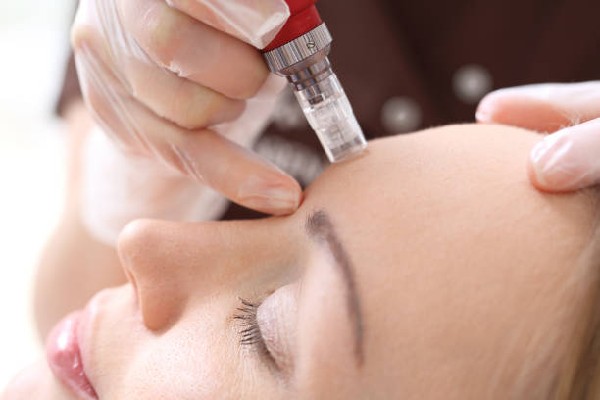![]()
Microneedling is a method used by many dermatologists to treat various kinds of skin conditions. It includes techniques using tiny sterile needles used to puncture the skin. It is a cosmetic procedure that is used to treat many skin issues. Its main approach is to improve the way skin feels and appears. It can help in the following areas:
- Uneven skin tones and texture
- Lost elasticity
- Acne scars
- Stretch marks
- Hyperpigmentation
- Wrinkles
How does this work?
It works by promoting the patient’s skin to generate more collagen. Pinpricks from the method cause a slight injury, and then the skin reacts by generating new tissue rich in collagen, which is more toned and texture.
Procedure
The doctor will make small pricks in this procedure beneath the skin with the help of a tool similar to a pen. These pricks are so tiny that they are not noticeable after the whole procedure. Before the start of the procedure doctor will give you either local or general anaesthesia to reduce any chance of pain.
Side Effects- do not last for long
- Peeling
- Infection
- Bleeding
- Bruising
Ideal Candidates
- Women that are not pregnant
- People that do not have skin diseases like eczema or psoriasis
- Do not have any open wounds
- Do not have a history of any skin scars.
The target area for microneedling
- Large pores
- Reduce skin elasticity
- Acne scars
- Uneven skin tone
- Fine line and wrinkles
- Sunspots
Pros of microneedling
- It’s inexpensive- the price depends upon the type of skin, location where you want, number of treatments required. Professional treatment may cost more compared to home treatment.
- It’s non-invasive- It has no injection, stitches, or any surgery and causes less pain.
Cons of microneedling
- Prolonged swelling
- Skin pigmentation changes
- Discomfort
- Redness
- Infection
- Scarring
- The slow process can take six weeks or more to give results after the procedure.
Microneedling products
There are many types of microagujas products, but some common features contain- small thin needles which may be fitted onto the cylinder and turned round and round across the skin. The products can be operated manually, that is, with the help of a hand.
Safety tips
- It may cause bleeding and hence, is not good for people with bleeding and clotting disorders.
- Any allergies regarding anaesthesia should be taken care of.
- After the procedure, how to take care of your skin should be known to you.
- Do not share microneedling products with other people as it may cause infection or spread any disease.
Various Instruments
- Home care derma rollers- are used at home by patients themselves as the needles are 0.15 mm in length and are used for fire lines, reducing pore size. It can be used a maximum of two times a week and is less costly than that done by professionals. After the procedure is done, the derma roller should be cleaned with hot tap water and dried.
- Derma-stamp is a small-scale version of derma roller that is available in different lengths of needles that vary from 0.2-3mm and have a diameter of about 0.12mm.
- Derma pen looks like a pen; the needles are disposable, and the tip has around 9-12 needles organized in rows. It uses a rechargeable battery to work in mainly the low-speed mode (412 cycles/min) and high-speed mode (700 cycles/min). It is reusable, which is its major advantage.
- Derma-frac- its targets sun-damaged skin, ageing, enlarged pores. Uneven tissue, superficial scars, hyperpigmentation. A complete full-face treatment takes approximately 45 minutes and is a cost-effective and non-invasive treatment. It is the combination of microneedling, serum infusion, light-emitting diode (LED) therapy.
